Gone are the days when a trip to the hair salon meant fluorescent lights, black leather chairs, and the hum of hairdryers in sterile surroundings. Today’s salon experience is as much about atmosphere as it is about aesthetics. Around the world, designers are reimagining these everyday spaces with inventive layouts, bold materials, and artistic flair transforming them into immersive environments that tell a brand’s story as vividly as a perfect balayage.
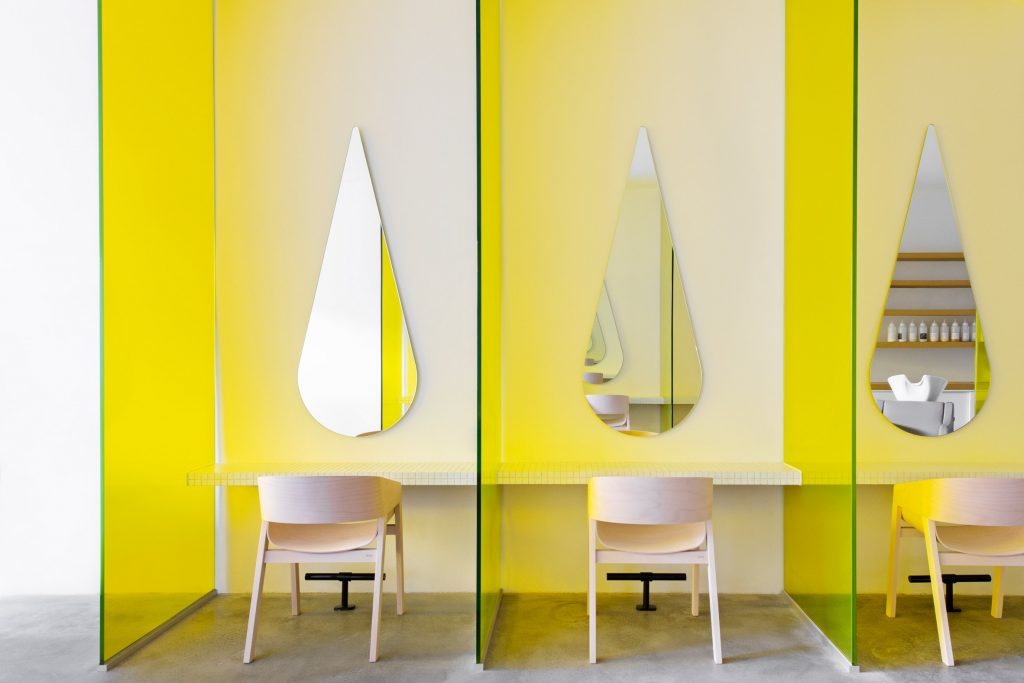

Mitch Studio by Danielle Brustman (also header image)
In Melbourne’s leafy suburb of Ashburton, Mitch Studio stands as a radiant example of what happens when brand identity meets design ingenuity. Interior designer Danielle Brustman transformed a once-ordinary 1950s hair salon into a luminous haven of creativity and calm. The project’s soul shines through its signature colour, yellow, used throughout to reflect the salon’s brand and infuse the space with optimism. Brustman stripped the interior to its bones, keeping only the polished concrete floor, and built a layout that balances energy with serenity.
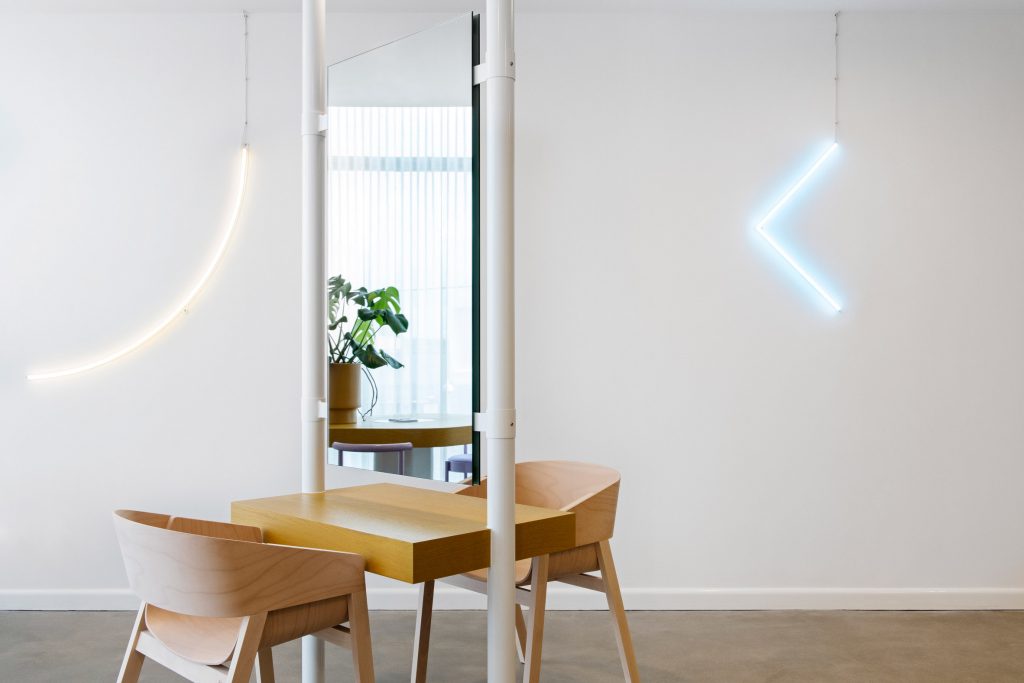
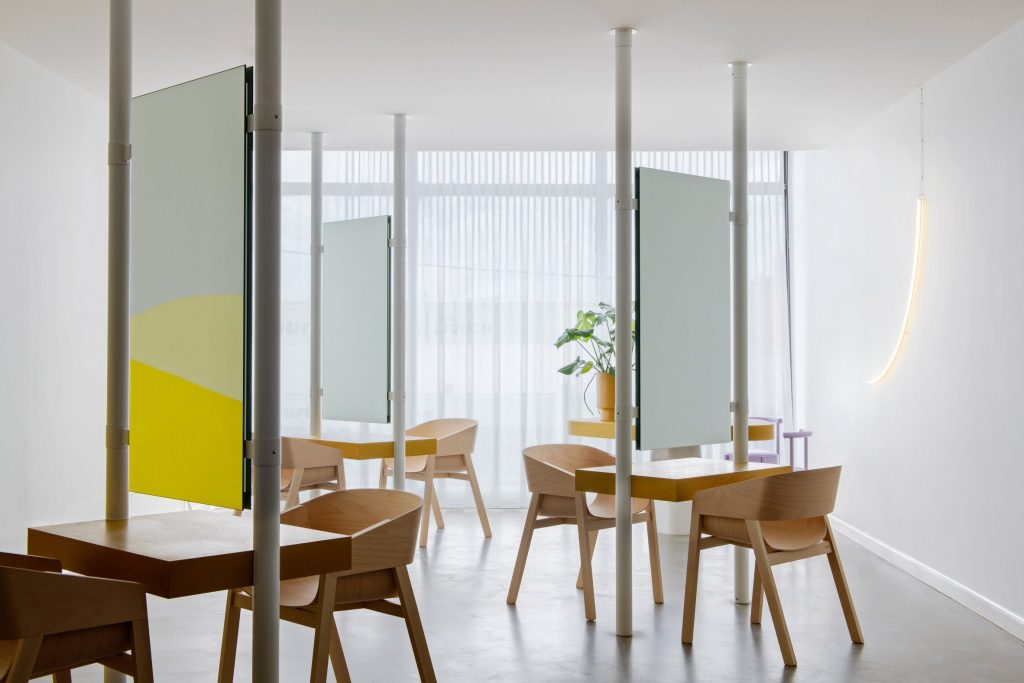
Mitch Studio by Danielle Brustman
The heart of the ground floor lies in its yellow-tinted glass partitions, which separate styling stations without sacrificing light. Each station features a droplet-shaped mirror, a poetic nod to water and transformation. These details create a rhythm in the space, combining visual warmth with practical function. The custom joinery, from the mustard-tiled reception desk to the white mosaic retail shelf, feels both tailored and timeless, complemented by a sculptural six-globe chandelier by Entler that adds just the right amount of drama.
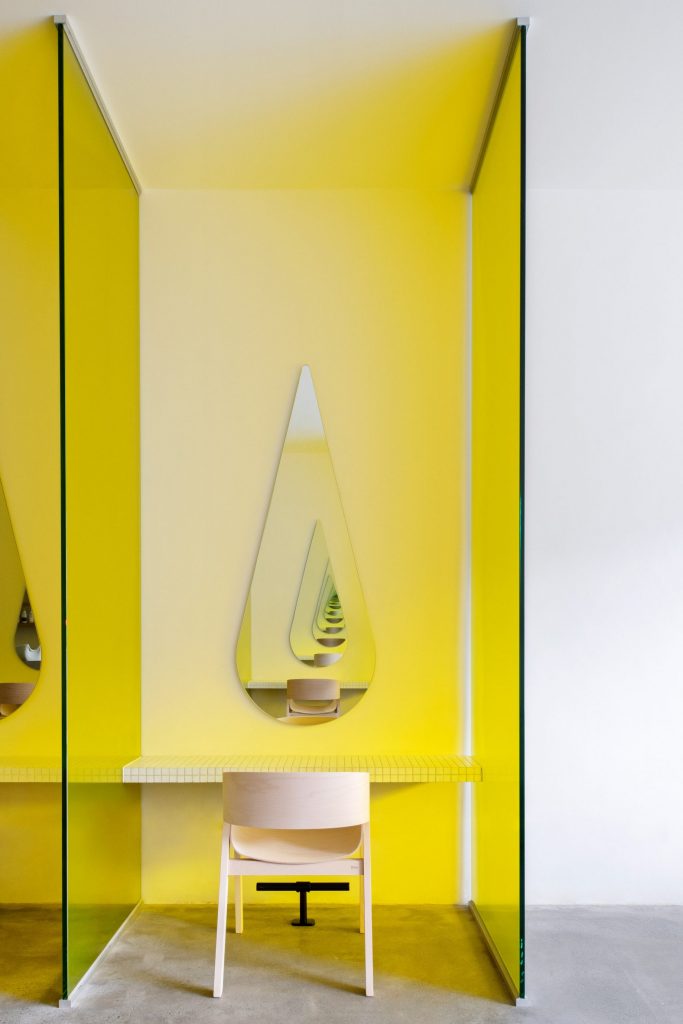

Mitch Studio by Danielle Brustman
Upstairs, Brustman softened the experience even further. Here, stylists work amid pale plywood furniture and mirrors that allow clients to face one another, creating a social, almost café-like ambiance. A worktable by the window invites clients to check emails while their colour sets, which proves that modern salons are designing for multitaskers as much as for relaxation seekers. Every inch of Mitch Studio was considered for both beauty and workflow; even the hair-recycling bins are discreetly built into the cabinetry.

Maria Nila Headquarters by ASKA
Where Mitch Studio basks in sunshine, Maria Nila’s headquarters and salon in Stockholm glows with a pastel kind of magic. Swedish architecture firm ASKA approached the renovation with a sense of whimsy and purpose, crafting an interior that looks as if the brand’s own shampoos and conditioners have melted into the walls. The most striking feature is an undulating plexiglass installation that drips from the ceiling like liquid colour, a playful yet elegant metaphor for the haircare brand itself.
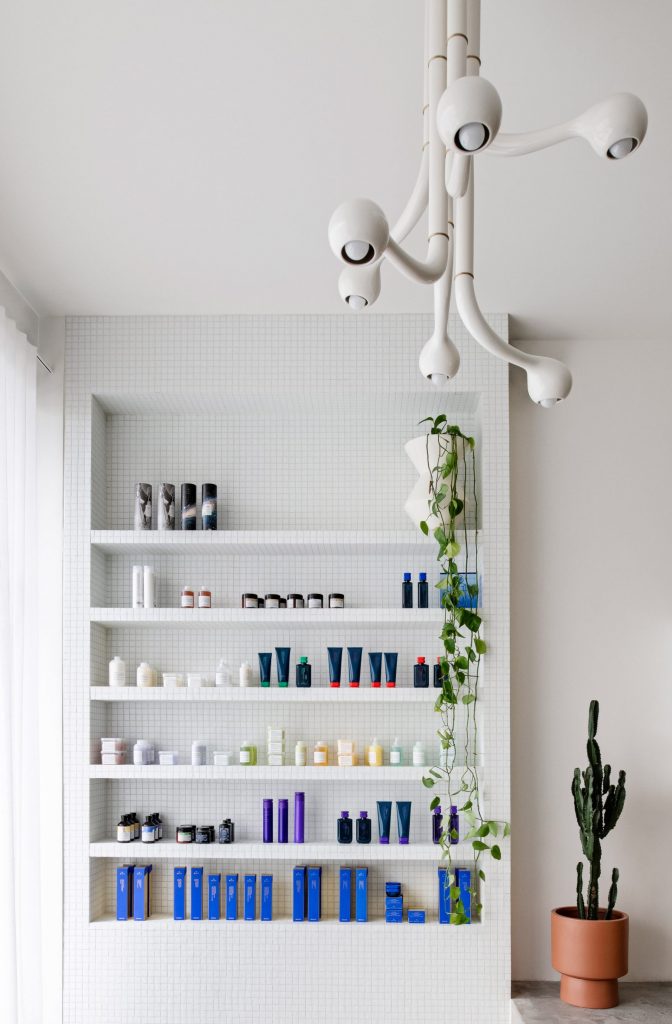
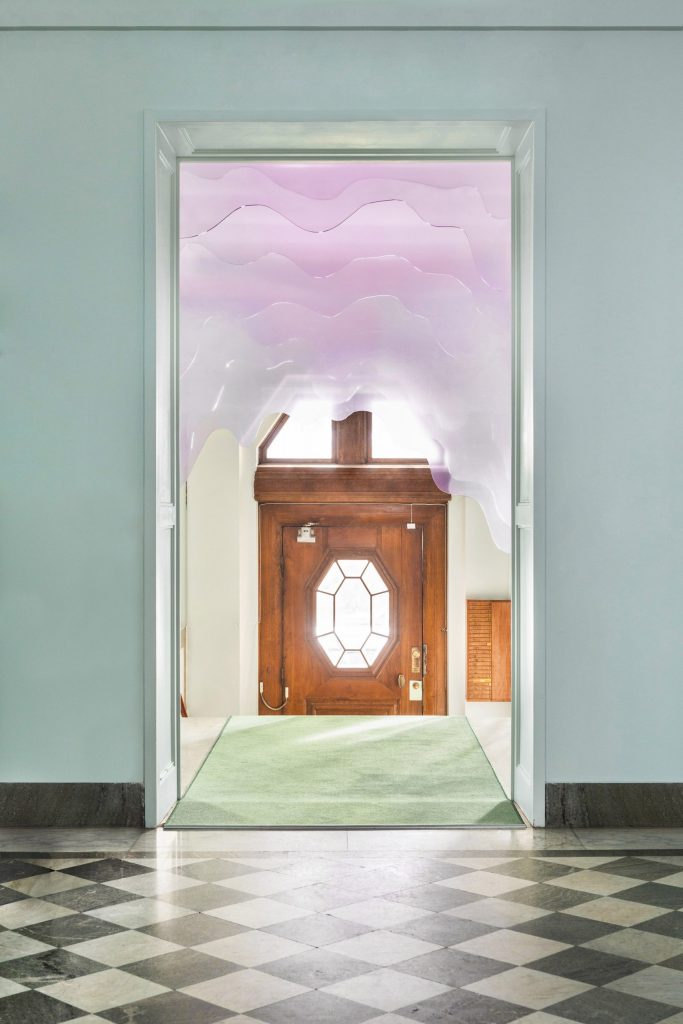
Maria Nila Headquarters by ASKA
ASKA infused the four-storey townhouse with a palette of soft pinks, peaches, and turquoise tones, directly drawn from Maria Nila’s product packaging. These hues replaced the building’s once-grey neutrality with warmth and personality. The studio preserved key architectural details, like the green chequered marble floor and wooden staircase, while reimagining the rest of the space with a bold mix of old and new. The result is a carefully orchestrated journey: public and social areas fill the ground floor, while workspaces and private offices ascend through the building, mirroring the natural rhythm of a creative company.
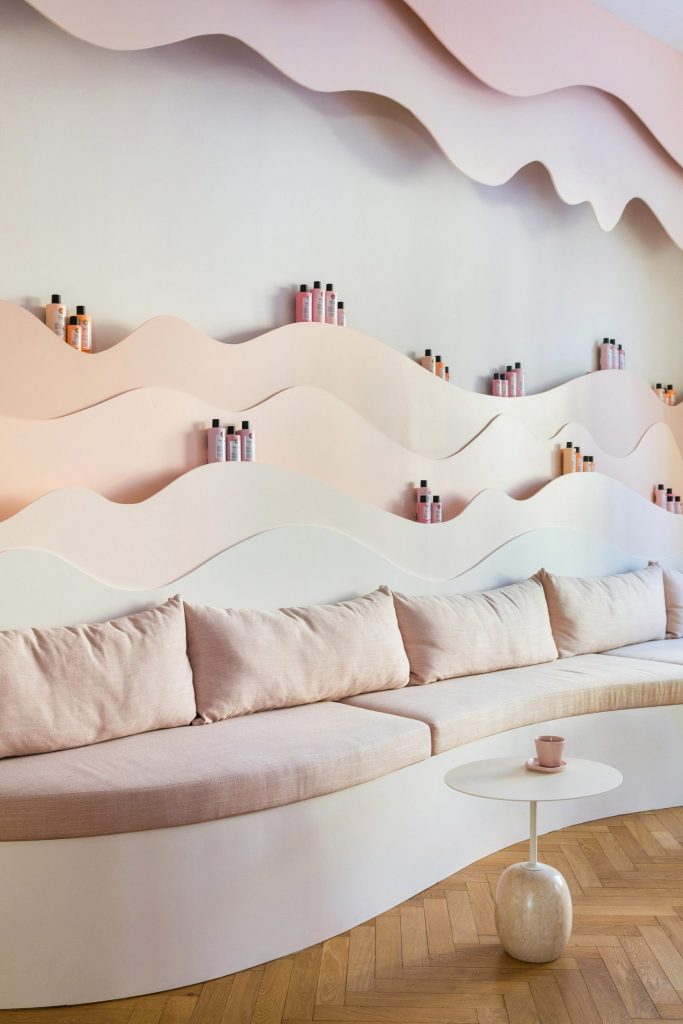

Maria Nila Headquarters by ASKA
The interiors read like a conversation between brand and architecture. ASKA designed undulating shelving units, pastel lounge furniture, and custom beauty bars, all inspired by organic shapes found in coral reefs, caves, and ocean waves. The pastel tones act as a tactile branding tool, turning each room into a three-dimensional reflection of Maria Nila’s product identity. Even the materials tell a sustainability story. ASKA sourced a tabletop made entirely from recycled plastics by Smile Plastic, aligning the project with the company’s eco-conscious philosophy.

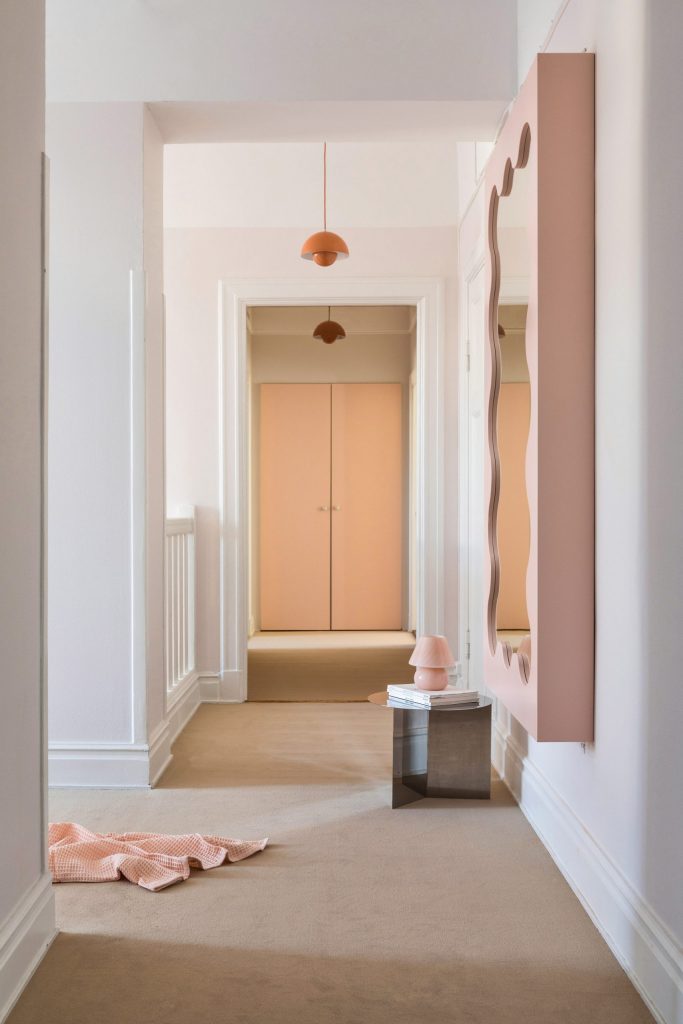
Maria Nila Headquarters by ASKA
With furniture by playful Scandinavian designers like Gustaf Westman, the overall effect is sophisticated yet fun, professional yet charmingly lighthearted. ASKA’s approach transforms a commercial workspace into an immersive brand experience, one that feels less like a corporate office and more like stepping into a soft, effervescent daydream.
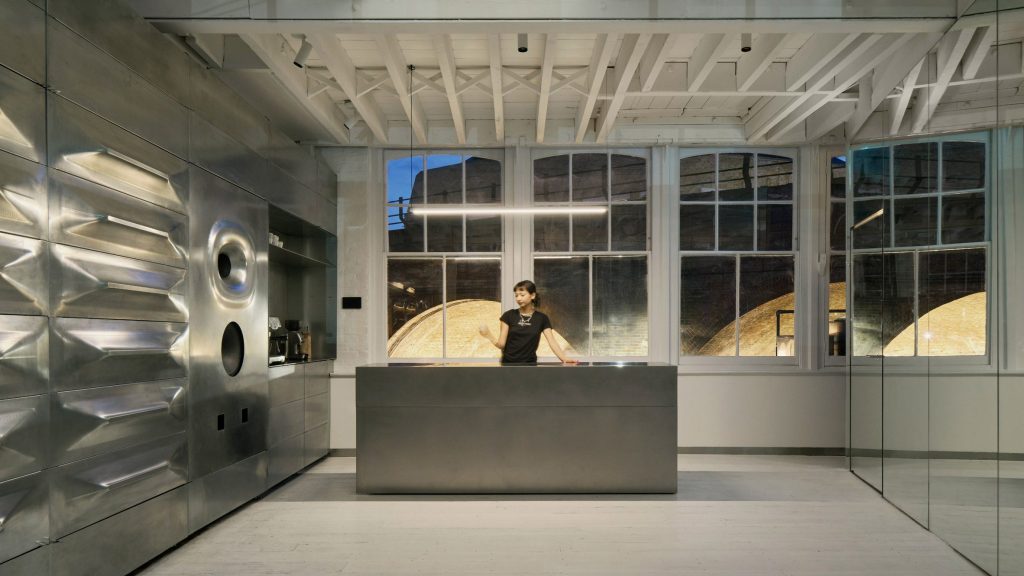
Salt Salon by Unknown Works
If Stockholm’s Maria Nila is a pastel dream, Salt Salon in London’s Borough Market is its industrial counterpoint – an architectural remix where sound, steel, and community intersect. Designed by local studio Unknown Works, the salon occupies a former storehouse and has been reimagined as both a hair studio and a cultural venue. The designers describe it as a “bold yet refined salon,” one that invites clients to move between intimate treatments, sonic experiences, and social gatherings.
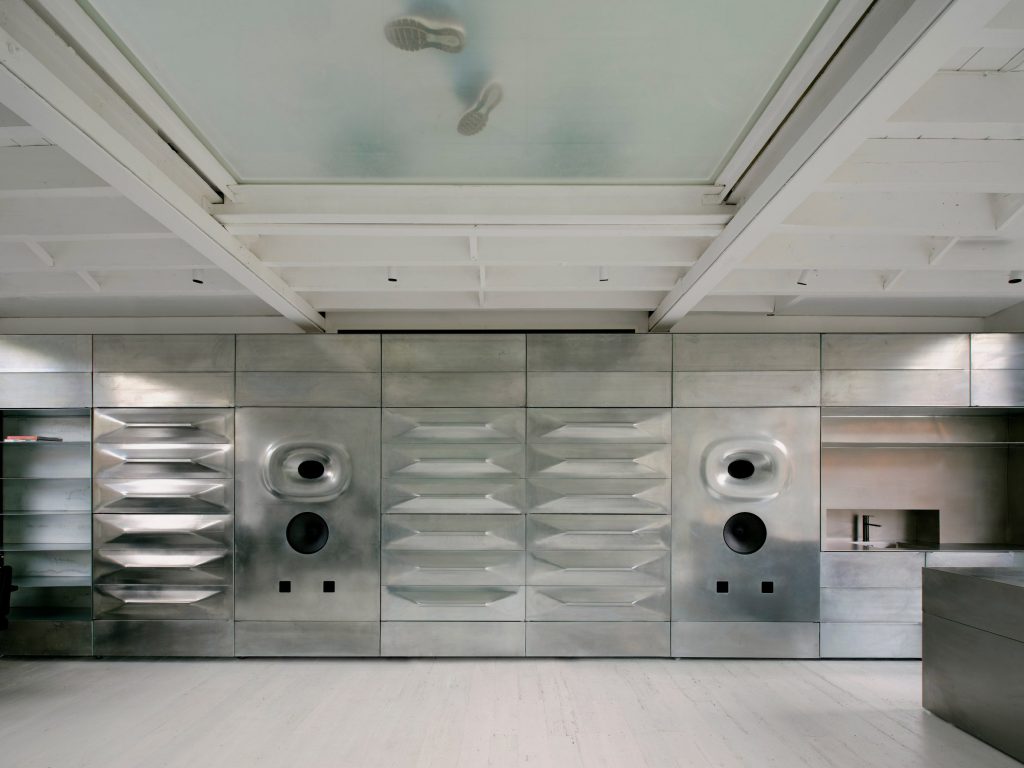
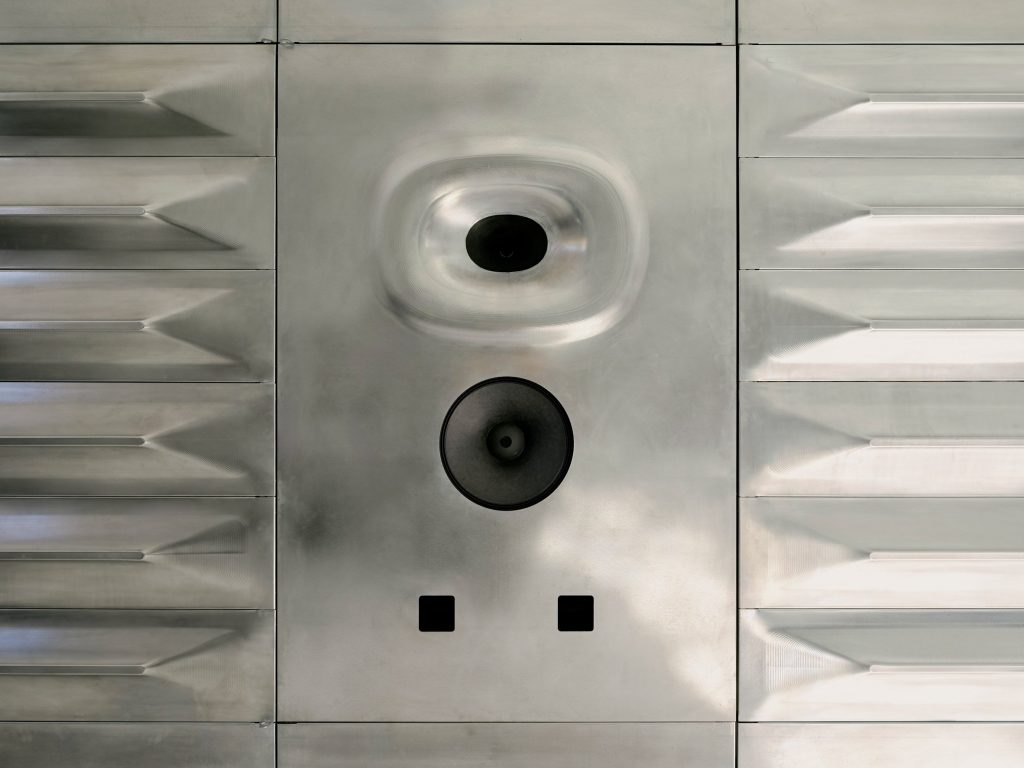
Salt Salon by Unknown Works
At its heart is the sound wall, a sculptural installation made from repurposed galvanised steel and developed in collaboration with hi-fi start-up Friendly Pressure. The material, salvaged from the Victoria & Albert Museum’s Blythe House storage facility, forms the backbone of the salon’s aesthetic and acoustic identity. The first floor (aptly named The Listening Floor) serves as a hybrid space for styling, music, and events, while The Cutting Floor above continues the metallic motif with polished steel mirrors and angular furniture.
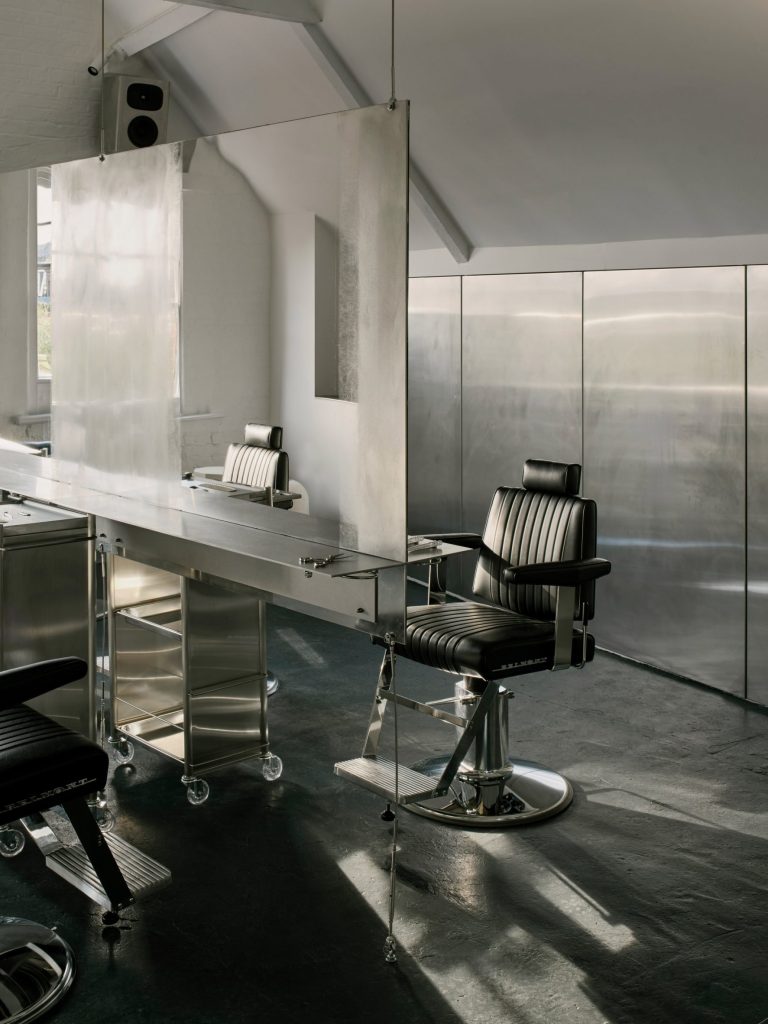

Salt Salon by Unknown Works
Despite its industrial materials, the interior feels surprisingly calm. Unknown Works managed the acoustics through angled walls, timber ceilings, and modular foam seating, ensuring that the space remains both audibly and visually soothing. The third level, The Colour Floor, offers a more relaxed setting for longer treatments. Here, even the floor is designed to evolve over time, as dye stains naturally become part of the salon’s living texture, a poetic reminder that beauty and process are inseparable.
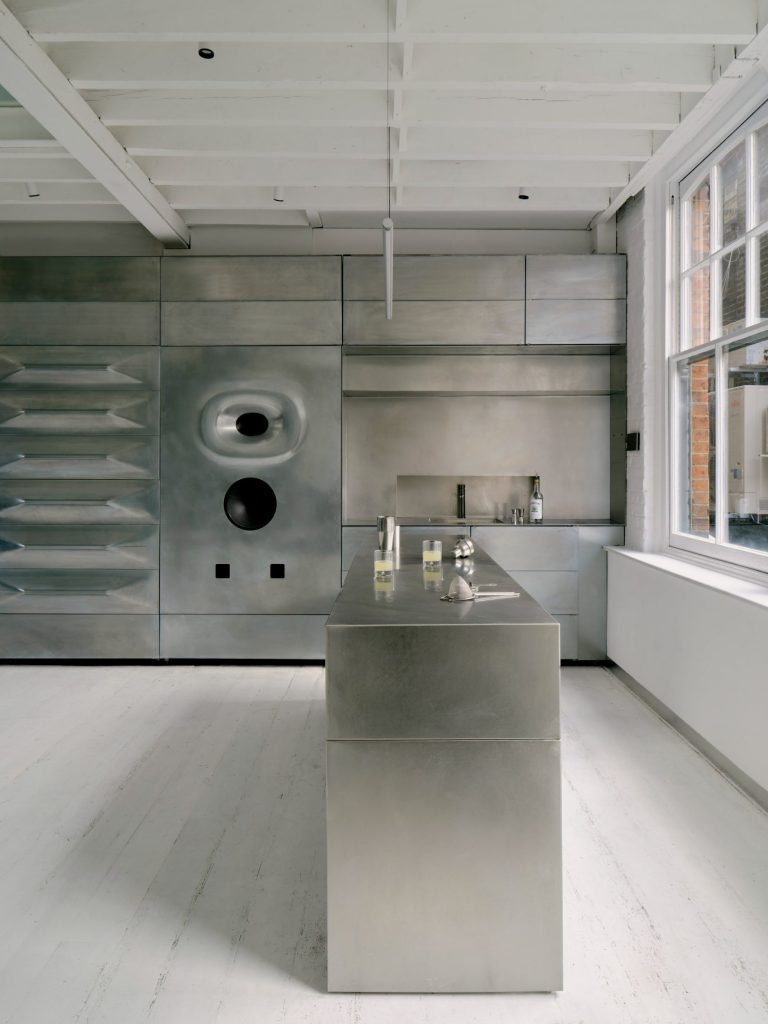
Salt Salon by Unknown Works
Salt Salon is more than a place for haircuts. It’s a cultural hub, a listening space, and a bold statement on material reuse. From its reclaimed metals to its layered sound design, the project challenges expectations of what a salon can be. As founder John Paul Scott put it, “It needed to surprise people.” And it does—by turning a haircut into an experience of rhythm, reflection, and resonance.